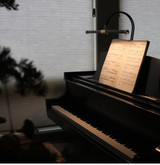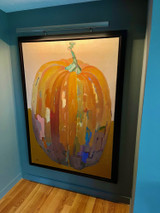There's No Life Without Light: The Evolution of Lighting Technology
There's No Life Without Light: The Evolution of Lighting Technology
Think of all the ways how we use light – both natural and artificial. How do we benefit from lighting technology? How does light fulfill a purpose in our lives? How did the discovery of light begin in history? How has lighting evolved over time that has provided such a great importance to our world? These are some key questions to consider when looking back on how lighting technology has evolved throughout history. The different tasks we perform in a day require some form of lighting – whether it's reading a book in the comfort of our home, walking in the park with our friends, watching a baseball game in a huge stadium or working on our laptop. Without the convenience of different lighting sources, we wouldn't be able to perceive the world around us, to see as we go about our day-to-day activities and essentially, we wouldn't be able to survive. Unfortunately, we often depreciate the use of lighting instead of embracing it in every way possible and recognizing its true necessity and how it has made a tremendous impact in our lives. That's why we are taking the time to share and review with you the importance of lighting technology and the evolutionary steps it has taken to get where it is today and how it has helped the human race to progress.
Let's start off with a mental picture for you to really understand what it would be like if we didn't have access to any light source: Have you ever seen an episode or movie that was about surviving in society during an apocalypse? Yes? Of course, we all have. Name some crucial elements that people need but are severely affected as a result of a massive destruction. Water, food, medicine, oxygen, shelter, sleep – and it goes without saying, light. Now, imagine this to be your reality. You, your family, your friends, your neighbors and the rest of society are in the middle of a world catastrophe or natural disaster, and you all lack the things mentioned above. What would that be like for you – without the basic necessities including light? How would this affect life in general? In what ways would this affect people mentally, emotionally and psychologically? That's right! A lack of any basic necessity such as light, would complicate our lives and our innate desire to survive. That's because light helps us move around and advance in a rapidly growing society. It helps us to make sense of our world, and to feel safe and secure. As a matter of fact, all living things need light in the circle of life. In simple words, there´s no life without light!
Now that we've painted a clear picture of what it would be like without any basic necessity such as light, let's go back in time and take a look at the stepping stones of lighting technology – starting from our main natural source of light, the sun, to today's modern lighting options.
The following is an organized timeline of the evolution of lighting technology:
Natural Light – The Sun
Life began with natural light – the sunlight. This has been our main source of light and energy for billions of years. Our planet Earth relies so much on the sun because it gives us life since plants use the sunlight to convert it into chemical energy as well as use carbon dioxide and water to produce oxygen, which is what humans and other living things use to breathe. Without the sun, Earth wouldn't have formed and we wouldn't be here.
Fire
The first human discovery of light was fire. There's evidence to support that Homo Erectus first discovered fire about 400,000 BC, probably seeing lightning strike a tree, and from this moment on, human development has evolved.
Torches
Torches were the first portable lights. These were branches or a bunch of sticks tied together drenched in a flammable liquid to light up. About 70,000 years ago, the first ancient lamps were invented. These were either made out of shell, hollow stones or rocks or some other non-flammable object which were filled with some sort of combustible material such as moss, wood or dried grass and used animal fat as lighter fluid to ignite them. Later on, handheld and mounted torches for buildings were used applying the same basic principles but with some other form of fuel source such as oil or wax.
Candles and Wick
As society progressed, so did the technology. Now homes were equipped with chimneys and tubes for ventilation and as a result, other forms to effectively use fire for lighting was in demand. In particular, man-made candles were invented using wick for lighting and heating purposes.
In 200 BC, the first man-made candles were created in China. These were made from whale fat and rice paper wick. As time went by, other materials were used to create candles such as beeswax (a natural wax produced by honey bees), tallow (a hard substance from animal fat) and colza oil (a non-drying oil obtained from the seeds of rapeseed). Then, paraffin wax was discovered and widely used since it was cheap to produce candles and therefore, affordable for people to buy candles. Wick was used in combination with these materials. It was made out of flax, paper, hemp and cotton. Throughout different times, wick was improved as well as the ways of burning it.
Gas Lamps
Gas lighting was first developed in England in 1790, thanks to Scottish inventor William Murdoch. At the time, he was experimenting with different types of gas and he realized that coal-gas was the most effective for illumination. He lit his own home in 1792 and from then on, the idea of using coal-gas was put into use. The first public street gas lighting has been dated back to 1807 in Pall Mall, London. However, David Melville was the first to discover and use gas lighting in Newport, Rhode Island in the United States in either 1803 or 1805. Other types of gas were also used such as hydrogen, methane, propane, butane and acetylene. As time went by, artificial lighting became more and more common and eventually, gas lamps were installed for public use. As a result, more people began to travel around towns feeling safe and secure. Overall, the use of gas lamps and the infrastructure to support them in cities and suburbs advanced lighting technology.
Electricity
The first person to come to mind when we think about the discovery of electricity is Benjamin Franklin, one of the founding fathers and an inventor. Although he is widely known for his investigations of electricity, his experiment with a kite, a key and a lightning storm only proved that there was a connection between lightning and electricity. The historical story of the discovery of electricity is actually credited to a variety of intelligent scientists and inventors.
Even though electricity was practiced and developed by the 17th century, the concept of electricity goes way back to the Ancient Greeks, Romans and Persians. There´s archaeological evidence to support that these ancient peoples were experimenting with electricity. In 1936, archaeologists found a clay pot, copper plates, tin alloy and an iron rod suggesting that the first man-made batteries were already created long ago.
In general, it's not about who was the first to discover electricity; it's about the different discoveries and inventions made by those individuals that played a part that advanced lighting technology to where it is in today's modern-day society. Among some of these creative geniuses were William Gilbert for his theories on magnetism and electricity, and the term “electricity” which was derived from what he described his findings as “electricus”;Humphry Davy for creating the world's first electric light known as an electric arc lamp; Joseph Swan for his invention of an early incandescent electric lightbulb and the first to demonstrate it to the public in England; and Thomas Edison for his invention of an improved incandescent light bulb in the United States.
Incandescent bulbs were used up until fluorescent bulbs were introduced in the early 1900´s. Unlike incandescent bulbs that emit light by heating the filament present in the bulb, fluorescent bulbs emit light by sending an electrical discharge through an ionized gas. The previous lighting products paved the way for the development of fluorescent bulbs starting with Peter Cooper Hewitt´s creation of a mercury vapor lamp, a preliminary version of the fluorescent lights used today. Similar to the improvement of incandescent bulbs, other scientists and inventors proceeded Hewitt in finding better versions of fluorescent lighting. During the 20th century, many worked on producing a durable, better quality, cost-efficient source of light for homes and businesses by using years of knowledge, research and testing. In 1938, there were lamps that emitted lights of different colors such as green, red, blue, pink and gold. By 1980, Philips Lighting developed a new and improved screw-in base design fluorescent lamp. Fluorescent lamps primarily became an alternative lighting option due to its energy-efficiency and durability.
High intensity discharge (HID) lamps were predominant during the 20th century, fluorescent, mercury-vapor, high pressure sodium and metal-halide being the most popular ones; however, LED lighting, also invented in the same century, was the only lighting technology that was very different from HID bulbs. In the 1960s, Nick Holonyak invented the Light Emitting Diode or LED. A LEDbulb is an electric light that produces light using light-emitting diode. LED lighting doesn`t require glass housing like incandescent and fluorescent lights do and does not contain mercury like compact fluorescent light bulbs or CFL bulbs do. Even though CFL bulbs are much better than incandescent bulbs, LED bulbs are considered to be the most advanced, modern form of lighting in the 21st century and will probably continue to be the most recommended source of light in the future. Overall, LED lighting has become the most efficient, high-quality, cost-effective lighting option in modern lighting technology.
Lighting Design
As lighting technology has progressed, lighting design has also evolved and provided an aesthetic visual appeal for homes. Starting in the early 1800s, the invention of gas lighting introduced a Victorian vintage style of gas street lights. In 1809, Humfry Davy's first electric lamp led to Joseph Swan´s incandescent bulbs which brought a new discover to the public eye. He lit his entire home with electric lights. By the 1900s, various lampshade designs were coming out in the market and interior lighting was opening up for home decor. A perfect example is the Tiffany lamp, a stained glass shade lamp displaying a floral design, that was used just before the 1900s to the 1930s. As interior lighting design became more common and popular, interior design shifted to Art Deco, the use of clean lines, geometric shapes, bold colors and metallic finishes. Art deco influenced the design of furniture, buildings, fashion and other elements. In 1932, the Anglepoise 1228 Lamp not only became practical for task lighting but it also displayed a classical, elegant design. Once the mid-1900s arrived, society was introduced with a selection of lighting design styles to choose from. The Arco floor lamp and a six-panel ice block glass chandelier are a couple of examples of some of the types of design styles used during these times. In the 1980s, lighting design turned to a more simplified, clean look instead of flashy, ornamental shapes and figures. Homes were now using soft-toned lamp shades such as Akari light shade, modern Italian table lamp and 80s Deco ceramic lamp. In the 21st century, lighting design was starting to bring back the old design styles from previous centuries but adding a touch of modern look and feel. Since the release of LED light bulbs, homes have begun to decorate with a combination of old-fashioned and modern lighting decor using LED lighting. Now, LED technology has opened up opportunities for unique lighting design that can be seen in homes, public areas, buildings and throughout all of modern-day society. Whether it´s for ambient, task or accent lighting, there´s plenty of lighting options and fixtures to go around!
Conclusion
In conclusion, lighting technology has vastly improved throughout history starting from the moment the sun was formed and provided natural light to our world, to humans finding multiple of ways to create artificial lighting to provide convenient lighting solutions for our everyday needs. For this reason, we should recognize the hard work and effort that all of those scientists, explorers, inventors and researchers accomplished, and appreciate what they have done to advance step by step lighting technology. Their discoveries and inventions even made a breakthrough for lighting design. Without them, we wouldn't have the modern-day lighting technology that we use today. So every single time you flick on a switch or buy a lightbulb at the store or heat the barbecue grill, think about what it took for you to be able to do these things, and keep in mind that other motivated and talented individuals from different times in history have now made your life easier, more comfortable and enjoyable.
Cocoweb is dedicated to providing the finest in designer lighting products. Our selection began with a modest offering of picture lights and piano lamps, which eventually expanded into pendant lights, gooseneck lights, and wall sconces—all of the lighting styles for the modern home. Our modern LED lighting products also include barn lights, ceiling lights, wall lights, and floor and table lamps. Come to our website at https://www.cocoweb.com/ to find lighting products suitable for your home.
Recent Posts
-
Playing in the Spotlight: The Power of Piano Lights
There's something magical about playing the piano under the spotlight. The music resonates through t …15th Apr 2024 -
Choosing the Right Bathroom Lighting: Tips for Creating a Spa-Like Retreat
In the realm of home design, bathrooms often serve as sanctuaries—places where we start and end our …25th Mar 2024 -
Our Picture & Art Lights Bring Your Artwork To Life!
Art has the power to captivate, inspire, and evoke emotions. Whether you're an avid art collector or …14th Feb 2024




